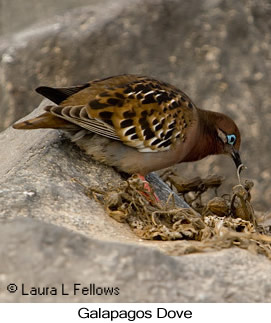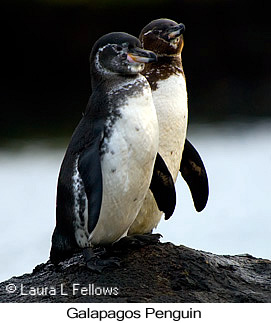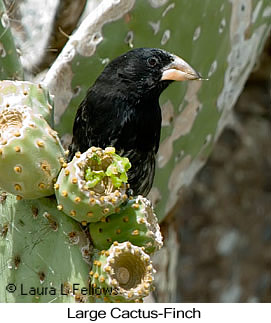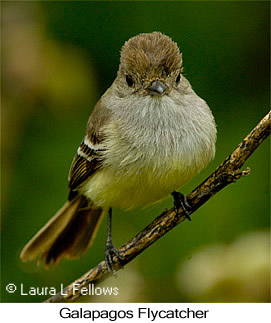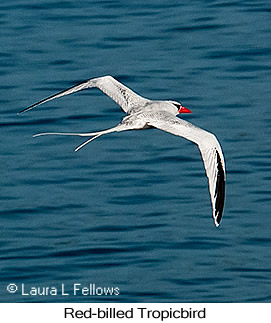GALAPAGOS ISLANDS PHOTO CRUISE
Tour Description

GALAPAGOS
PHOTO TOUR
ANY TIME*
| Duration: | 10 days, 9 nights |
| Group Size: | 2-16 |
| Price: | $4950 |
| Single Suppl: | $3200 |
| Pace: | Easy |
| Difficulty: | Easy |
| * This tour is available for any dates of your choosing provided guide services and accommodations are available. | |
DAY 1 - QUITO
International flights arrive by evening. Everyone meets at the Hotel Sebastian, reached by a 1-hour (or more) taxi ride from the new international airport. Unfortunately, there are still few hotel options near the airport and the only decent hotel is difficult to book. If you choose to book a hotel near the airport, we will discount the tour price by $35/person/night. Night at Hotel Sebastian in Quito.
DAY 2 - BALTRA & BACHAS BEACH
Following leisurely breakfast, transfer to Quito airport for flight to Baltra Island, gateway to the Galapagos. Upon arrival, transfer across the island to meet the boat. There you'll encounter the first Darwin's finches, the ubiquitous Small Ground-Finch and Medium Ground-Finch. Also likely is the striking Galapagos Dove. Board the 16-passenger yacht, sail to nearby Bachas Beach on Santa Cruz. Present in the harbor are Elliot's Storm-Petrel and other seabirds such as Brown Noddy. At Bachas Beach disembark for an easy walk along sandy beaches and through dunes. Here expect American Flamingos, various shorebirds, and Galapagos Mockingbird. After returning to the yacht, sail overnight to Genovesa Island, arriving before dawn.
DAY 3 - GENOVESA ISLAND
Genovesa is the only northern island in the Galapagos accessible to visitors. Morning disembark at Darwin Bay. The white sand beaches feature Galapagos Sea Lion, Galapagos Fur Seal, and lovely Swallow-tailed Gulls. Here you'll be in the midst of a spectacular nesting colony of Red-footed Booby. This species nests year-round in the tangled mangroves and is the most common booby in the Galapagos, but it is rarely seen anywhere other than Genovesa as it feeds far at sea. Nazca Boobies are courting from May-August and attending nests from August-January. Genovesa is the only island where Sharp-beaked Ground-Finch can be found and is one of the few places to find and photograph Large Cactus-Finch. Also present is the Large Ground-Finch.
Afternoon climb Prince Phillip's Steps, a natural stone "staircase" on the south side of the bay (rather steep and can be difficult for some people). Nesting Red-footed Booby and Nazca Booby colonies are present in this area as well. Above the incline, a path through the tangled forest of dwarf Palosanto leads to the other side of the island. The thick tangle of dwarf trees is home to a significant colony of Great Frigatebirds. Farther along the trail is the only place to find the Galapagos subspecies of Short-eared Owl, a difficult bird to actually spot as it is well camouflaged when sitting still. The far end of the trail reaches a cliff where large numbers of Wedge-rumped Storm-Petrels nest. While transferring between islands, a number of seabirds can be seen including Galapagos Petrel, Band-rumped Storm-Petrel, and Wedge-rumped Storm-Petrel. Overnight sail to Bartolome Island.
DAY 4 - BARTOLOME & SANTIAGO ISLANDS
Morning disembark on Bartolome Island, a small volcanic island near Santiago Island. Pinnacle rock is one of the famous landmarks of the Galapagos and is one of the few places where Galapagos Penguins are found. You'll also likely see and photograph the endemic Galapagos Hawk, which is only found on a few islands. Walk the path up to the peak, 240 ft above sea level, for a panoramic vista and the most photographed view in the Galapagos. Afternoon visit Sullivan Bay on nearby Santiago Island. The beach offers some of the best tide pools in the islands. Reddish-black marine iguanas and Galapagos Land Iguanas are common. Ten species of Darwin's finches are found on the island, most notably the endangered and very rare Mangrove Finch. Other Darwin's finches on the island include Green Warbler-Finch, Vegetarian Finch, Woodpecker Finch, Large Tree-Finch, Small Tree-Finch, Small Ground-Finch, Large Ground-Finch, Medium Ground-Finch, and Large Cactus-Finch. Evening sail to Santa Cruz Island.
DAY 5 - SANTA CRUZ ISLAND
Morning visit Black Turtle Cove, a red mangrove lagoon on Santa Cruz. You'll go into the lagoon in paddle boats, where the main attractions are nesting Green Sea Turtles and an abundance of White-tip Reef Sharks, Hammerhead Sharks, Golden Rays, and Spotted Eagle-Rays. Afternoon visit Dragon Hill on Santa Cruz, an inland site reached by vehicle. Dragon Hill is a very dry area where the main attraction is a small population of Galapagos Land Iguanas. Some birds to be found there are White-cheeked Pintail, Large Ground-Finch, and Common Cactus-Finch.
DAY 6 - SANTA CRUZ ISLAND
Morning visit famous Charles Darwin Station in Puerto Ayora, where many Galapagos animals are on display. Marine iguanas, Lava Heron, and various other birds are found around Academy Bay where you'll dock. Elliot's Storm-Petrel are common there. Afternoon visit the highlands to view and photograph Giant Tortoises at one of the very few places they are still found in the wild. Notable birds of the highlands are Galapagos Flycatcher, Small Tree-Finch, and Woodpecker Finch. Overnight sail to Floreana Island.
DAY 7 - FLOREANA ISLAND
Morning visit famed Post Office Bay and Cormorant Point on Floreana Island. Post Office Bay got its name from its usage by early settlers as a place to leave messages. A small trading post and museum documents the colorful history of the island. Floreana is the only place to see and photograph Medium Tree-Finch. A number of marine birds can be seen around Floreana, including Galapagos Penguin, Red-billed Tropicbird, and Swallow-tailed Gull. Of particular interest is nearby Champion Islet, one of only two tiny islands where the endangered Floreana (Charles) Mockingbird still persists. The bird can often be seen and photographed along the rocky shoreline without going ashore, which is now prohibited. Boat captains are usually willing to skirt the shoreline upon request from passengers. Overnight sail to Española Island.
DAY 8 - ESPAÑOLA ISLAND
Española is best known for the only Waved Albatross nesting colony in the Galapagos. The albatrosses arrive in late March and spend the following month courting. Their courtship ceremony is both intriguing and photogenic. Egg laying begins in mid-April and continues into June. Birds remain in the colony until early December and then depart for the open sea until the following March. Depending on where the boat lands on the island, reaching the colony can be a short walk or a rather long walk across the island. Española also features nesting colonies of Red-billed Tropicbirds on the cliffs and Blue-footed Boobies in the interior. The island is the only place to find the Española (Hood) Mockingbird and is also home to the Gray Warbler-Finch. It's one of the few islands where one can see and photograph the Galapagos Hawk. Overnight sail to San Cristobal Island.
DAY 9 - SAN CRISTOBAL & QUITO
Morning look for and photograph San Cristobal (Chatham) Mockingbird, which is only found on San Cristobal. Also look for Gray Warbler-Finch, Vegetarian Finch, and Woodpecker Finch. Visit interpretation center as time permits. Mid-day flight back to Quito. Night at Hotel Sebastian in Quito.
DAY 10 - END OF TOUR
Tour ends with breakfast at the hotel. International flights home.
TOUR NOTES
Early booking is recommended to ensure space on the boat. Price does not include park entrance fee ($100), flights to/from the Galapagos (arranged by boat operator; approx $390-430), bus to/from Baltra (approx $5), Isabel Island tax, hotel in Quito (we can assist with making reservation). 30% deposit due upon registration. The remaining payment is due 90 days prior to departure. Cancelation fee is 25% up to 60 days prior to departure, 50% 60-31 days prior to departure, and 100% thereafter. Cruise can be combined with visits to birding lodges in the western or eastern Andes upon request.
ADDITIONAL INFO
(Not on Menu Above)
